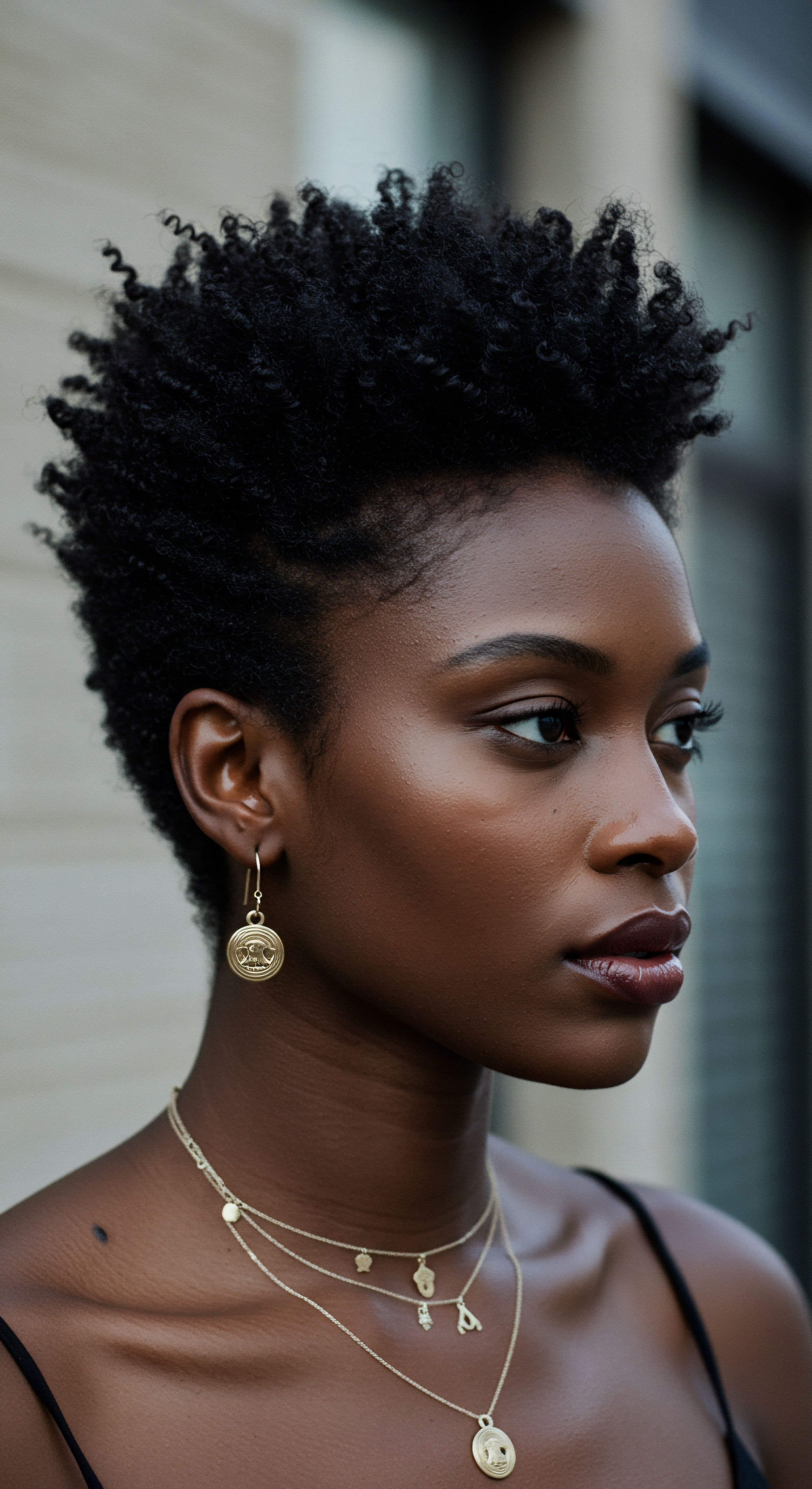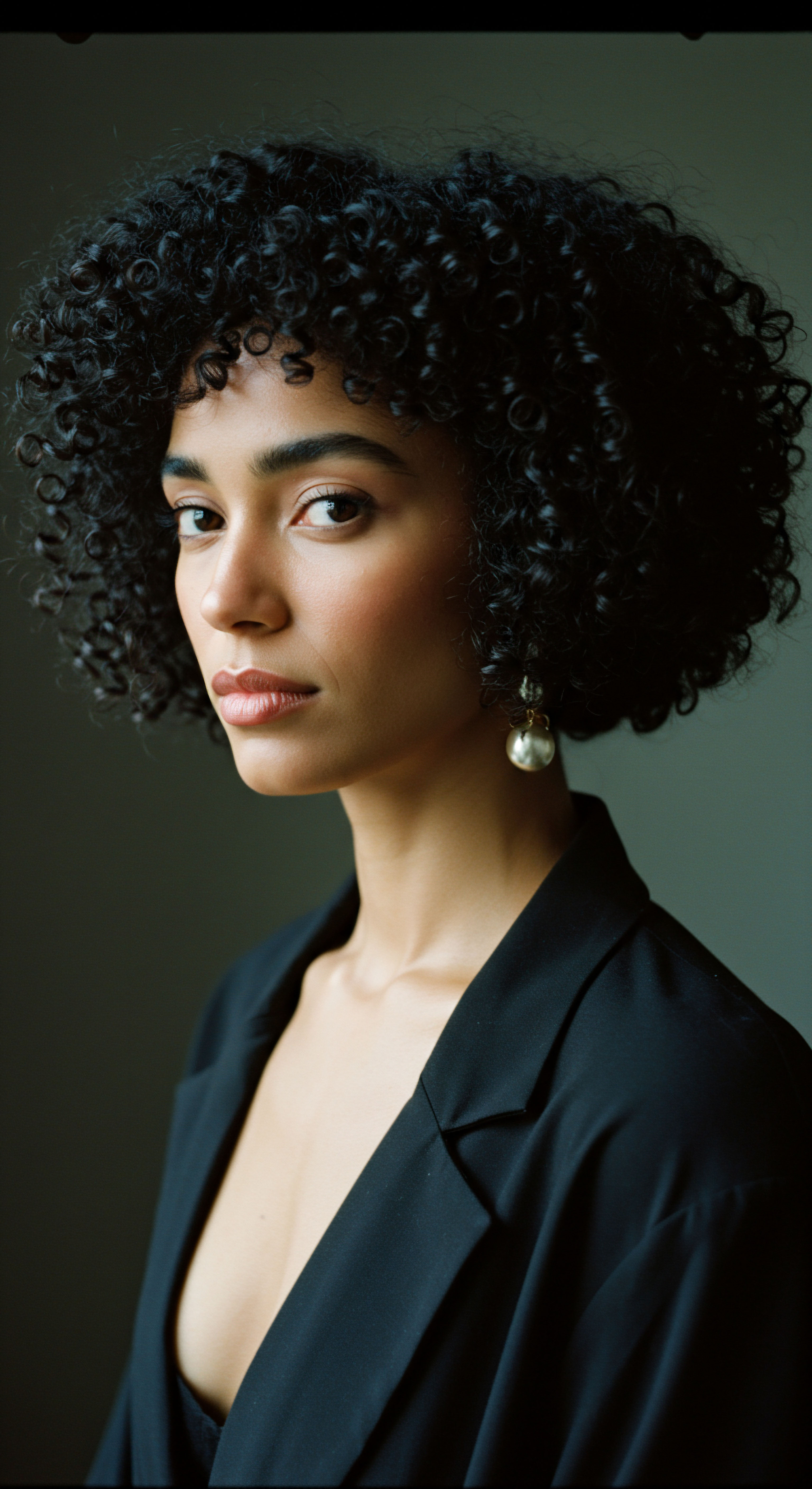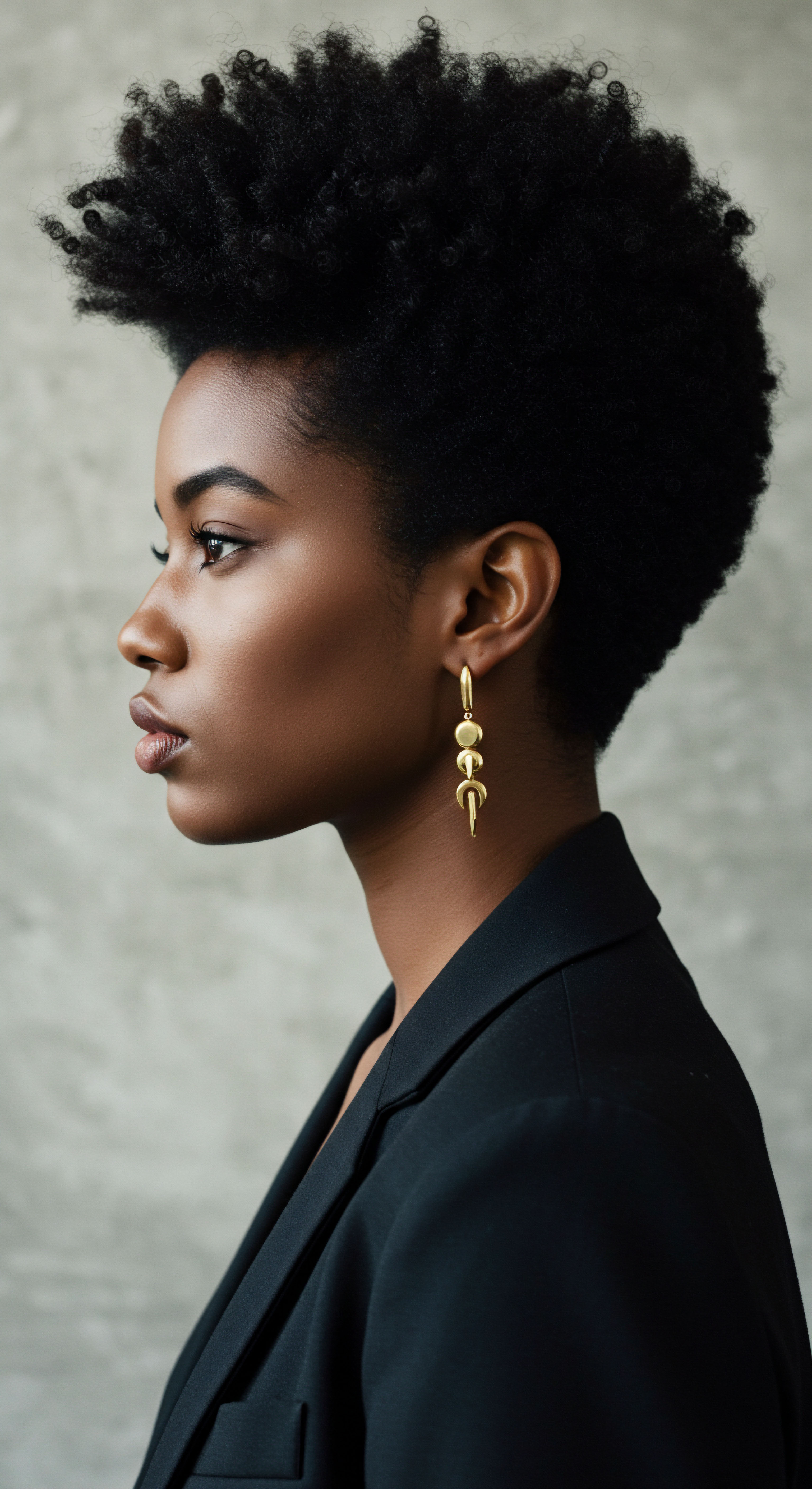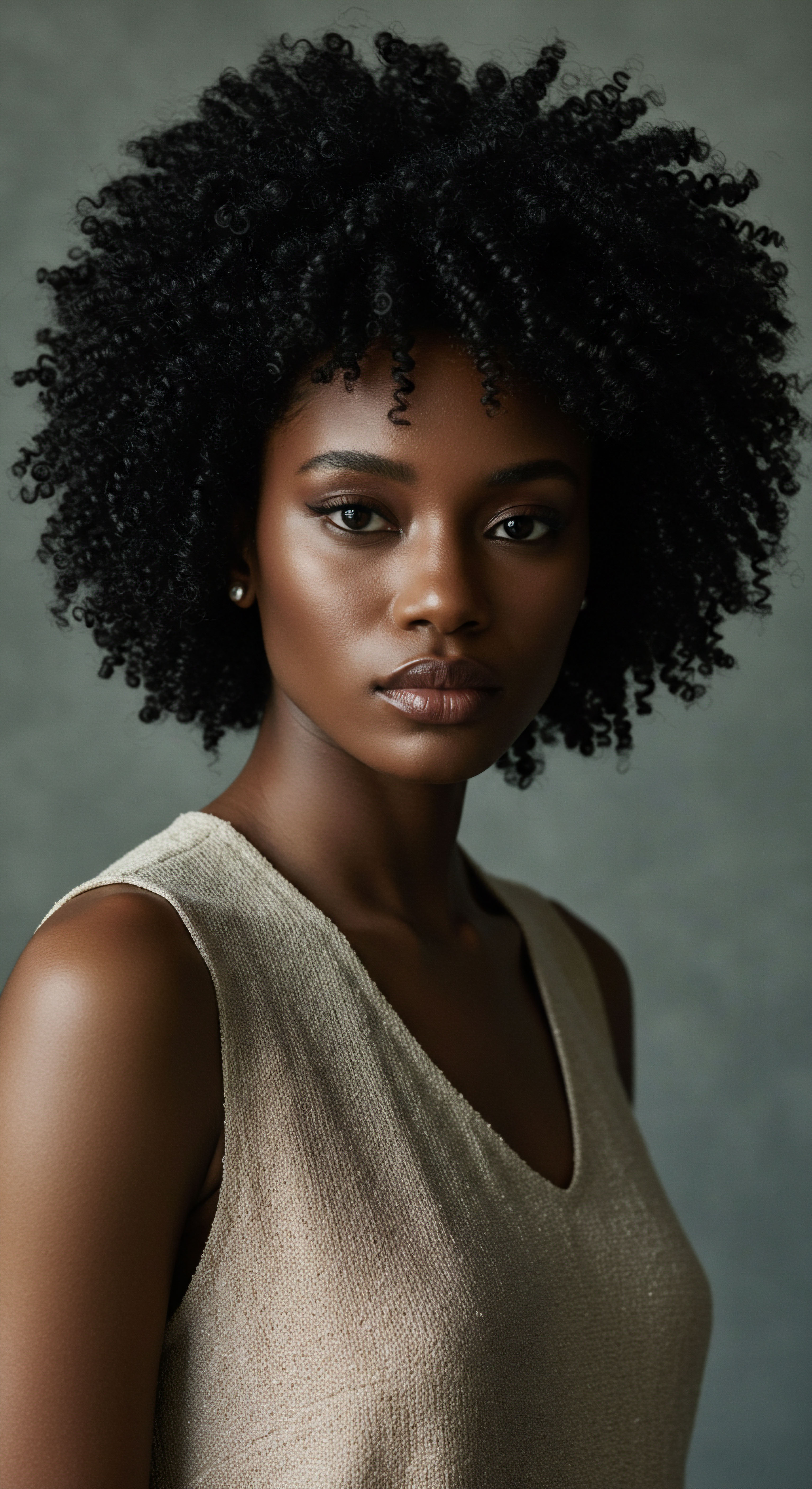
Roots
The quiet hum of existence often leads us to consider the enduring legacies that shape who we are, extending beyond spoken words or written histories. Among these profound inheritances, the practices surrounding hair care stand as a vibrant, living testament to cultural identity and resilience. For textured hair, in particular, these ancestral traditions are not simply echoes from a distant past; they are foundational truths, guiding principles that continue to nourish and affirm. This exploration delves into the deep currents of what ancestral hair care practices signify, peeling back layers of time to reveal the enduring wisdom held within each strand, each ritual, each communal moment.
Across diverse civilizations, hair has consistently transcended its biological function, serving as a powerful canvas for self-expression, a marker of societal standing, and a conduit for spiritual connection. Before the widespread advent of commercial products, human ingenuity, coupled with an intimate understanding of nature, provided every solution for maintaining healthy, meaningful hair. This profound connection to the earth and its bounty underscores a holistic approach to well-being, where hair care was inseparable from overall vitality and communal harmony.

Hair as a Map of Identity and Status
From the intricate cornrows of ancient Africa to the revered long hair of Indigenous peoples, hairstyles served as living documents. They communicated a wealth of information about an individual’s life. In many African societies, hair patterns could denote one’s geographic origin, marital status, age, ethnic affiliation, wealth, or even rank within a community.
For instance, the Yoruba people of Nigeria regarded hair as highly significant, believing that caring for it brought good fortune. Their intricate threading and weaving techniques were not merely aesthetic choices; they were expressions of identity and spiritual alignment.
Ancestral hair practices offer more than beauty; they are living narratives of identity, resilience, and belonging.
Similarly, for many Indigenous peoples of the Americas, hair was considered sacred, a spiritual extension of the self. Long hair often symbolized a strong cultural identity, promoting self-esteem and a sense of belonging. The care given to hair, through proper grooming and ornamentation, was a reflection of self-respect and connection to family, tribe, and the natural world.

The Earliest Depictions and Shared Wisdom
Evidence of hair adornment stretches back millennia. A rock painting discovered in the Sahara Desert, dating to around 3500 BCE, shows a woman with cornrows, providing one of the earliest known visual records of braided hair. This points to the deep historical roots of these practices, long before recorded history in many parts of the world. Ancient Egyptians, too, showcased elaborate hairstyles, wigs, and braids that spoke volumes about social status and religious beliefs.
The universal thread connecting these ancient practices is a deep respect for hair as a living part of the body, worthy of dedicated attention. This reverence was often expressed through communal grooming sessions, which were far more than just practical acts. They became opportunities for social bonding, for sharing stories, and for passing down generational knowledge. In Africa, these sessions were a cherished time for women to connect, laugh, and transmit heritage.
- Cultural Communication ❉ Hair served as a complex language, its styles conveying social standing, age, marital status, and even spiritual beliefs within many communities.
- Community Bonding ❉ Hair care rituals, particularly braiding, provided vital opportunities for shared experiences, storytelling, and the transmission of wisdom across generations.
- Spiritual Connection ❉ In numerous ancestral traditions, hair was perceived as a conduit to the divine or a source of spiritual power, treated with profound reverence.
| Culture/Region Pre-Colonial Africa |
| Key Practices Intricate braids, twists, oiling, communal grooming |
| Cultural Significance Status, age, marital status, ethnic identity, spiritual power, community building |
| Culture/Region Indigenous Americas |
| Key Practices Long hair, ceremonial grooming, natural cleansers (yucca root, clay) |
| Cultural Significance Spiritual connection, identity, mourning, strength, unity with nature |
| Culture/Region Ancient Egypt |
| Key Practices Wigs, braids, natural oils (castor, almond), adornments |
| Cultural Significance Social status, religious beliefs, protection from elements |
| Culture/Region Ancient India (Ayurveda) |
| Key Practices Herbal oils (amla, bhringraj, coconut), scalp massage |
| Cultural Significance Holistic health, spiritual balance, hair growth, prevention of graying |
| Culture/Region These examples demonstrate the profound and varied cultural roles of hair care across ancient civilizations. |

Ritual
Stepping from the foundational understandings of hair’s meaning, we turn now to the daily and periodic practices that brought these beliefs to life. The notion of ‘ritual’ here extends beyond mere routine; it encompasses the mindful, purposeful acts of care that shaped both the physical condition of hair and the spirit of the individual. This segment guides us through the practical wisdom of ancestral hair care, offering a gentle invitation to explore techniques and methods that, while rooted in antiquity, hold timeless relevance for modern textured hair care.
Ancestral hair care was deeply intertwined with the rhythms of nature and the resources available within specific environments. This resourcefulness led to the discovery and consistent application of natural ingredients, each selected for its specific beneficial properties. The understanding of these elements was not theoretical; it was lived, passed down through generations, and perfected through direct experience.

The Science of Ancient Botanicals
Before the era of synthetic compounds, nature provided a pharmacy of hair-loving ingredients. Plants, fats, and minerals were carefully selected and prepared to cleanse, condition, and adorn hair. In ancient India, Ayurvedic practices revered ingredients such as Amla (Indian gooseberry), Bhringraj, and Coconut Oil for their ability to nourish the scalp, strengthen hair, and even prevent premature graying. These herbal oils, rich in vitamins, antioxidants, and essential fatty acids, encouraged healthy hair growth, reduced scalp concerns, and improved overall hair vitality.
Consider the profound wisdom embedded in these choices:
- Coconut Oil ❉ Widely used across many cultures, particularly in India and Africa, coconut oil is lauded for its ability to penetrate the hair shaft, minimizing protein loss and offering deep moisture.
- Castor Oil ❉ A staple in ancient Egyptian routines, this thick oil conditioned and strengthened hair, often mixed with honey and herbs to promote growth and shine. Modern studies highlight its ricinoleic acid content, which possesses moisturizing, nourishing, and even antimicrobial properties.
- Shea Butter ❉ A cornerstone of African hair care, this natural fat from the shea tree provided deep hydration and protection, honoring the natural texture of hair.
Ethnobotanical surveys illuminate the systematic knowledge of plants for hair health. For instance, in Northern Morocco, traditional uses of plants like Lawsonia Inermis (Henna) for strengthening and revitalizing hair, or Origanum Compactum for fortifying and coloring, have been documented. These traditions demonstrate a sophisticated understanding of plant chemistry, long before modern laboratories could isolate compounds.
Ancient wisdom, rooted in nature’s pharmacy, offers a timeless blueprint for vibrant hair.

Styling as a Protective Art
Many ancestral styling techniques served a dual purpose ❉ aesthetic expression and practical protection. Braids, twists, and locs, prevalent in African cultures, were not only beautiful but also safeguarded the hair from environmental damage and daily manipulation. These styles could last for extended periods, reducing the need for frequent washing and manipulation, which in turn helped to preserve the hair’s delicate structure.
During the transatlantic slave trade, the significance of these protective styles deepened. Enslaved Africans, stripped of their cultural identity and access to traditional tools and ingredients, adapted. Cornrows, for instance, became a functional means to keep hair manageable under harsh conditions.
More remarkably, they served as secret communication systems, with specific patterns concealing escape routes or seeds for survival. This poignant example illustrates how hair care rituals became acts of defiance and survival, transcending their original purpose to become symbols of resistance.

What Practical Lessons Do Ancestral Hair Care Practices Offer for Modern Routines?
The core lessons from ancestral practices center on minimal manipulation, deep hydration, and reliance on natural ingredients. While modern life offers conveniences, the principles of ancestral care suggest a more gentle, deliberate approach. This includes prioritizing protective styles that shield hair ends, utilizing natural oils and butters for moisture retention, and viewing hair care as a mindful, nurturing ritual rather than a quick fix.
For instance, the widespread use of oils in ancient practices, from Egyptian castor oil to Indian Ayurvedic blends, points to a consistent emphasis on scalp health and moisture. Research shows that certain oils, like coconut oil, can indeed penetrate the hair shaft, preventing protein loss, while others, like olive oil, improve elasticity. This historical reliance on natural lipids for hair health is now supported by contemporary scientific understanding.
- Oiling Scalp and Strands ❉ Regular application of natural oils, often warmed, nourishes the scalp, reduces dryness, and strengthens hair from the root.
- Protective Styling ❉ Techniques like braiding and twisting minimize exposure to environmental stressors and mechanical damage, promoting length retention.
- Natural Cleansing Agents ❉ Before commercial shampoos, plants like yucca root, shikakai pods, and reetha berries were used for their natural saponins to cleanse hair gently.
| Ingredient Coconut Oil |
| Source Culture/Region India, Africa, Southeast Asia |
| Primary Benefit (Traditional & Modern) Deep conditioning, protein loss prevention, moisture retention |
| Ingredient Castor Oil |
| Source Culture/Region Ancient Egypt, India, West Indies |
| Primary Benefit (Traditional & Modern) Strengthening, growth promotion, moisturizing, antimicrobial |
| Ingredient Amla (Indian Gooseberry) |
| Source Culture/Region India (Ayurveda) |
| Primary Benefit (Traditional & Modern) Scalp nourishment, hair strengthening, premature graying prevention |
| Ingredient Shea Butter |
| Source Culture/Region West Africa |
| Primary Benefit (Traditional & Modern) Intense hydration, protection from elements, softening |
| Ingredient Yucca Root |
| Source Culture/Region Indigenous Americas |
| Primary Benefit (Traditional & Modern) Natural cleansing (saponins), scalp purification |
| Ingredient This table highlights how ancient botanical knowledge continues to inform modern hair wellness. |

Relay
Our contemplation now deepens, moving beyond the foundational and the practical to the intricate interplay of culture, science, and the human spirit. The journey of ancestral hair care is not a linear progression; it is a complex, multi-dimensional relay race across generations, where each era passes on wisdom, adapts, and sometimes, through necessity, transforms. This section invites a profound consideration of how these practices, steeped in history and meaning, have navigated societal shifts, scientific revelations, and the enduring human quest for self-expression.
The story of textured hair, particularly for Black and mixed-race communities, offers a poignant illustration of this relay. It reveals not only the resilience of tradition but also the profound impact of external pressures on deeply rooted cultural practices. Understanding this complex interplay requires looking beyond the surface, examining the biological realities of hair alongside the social, psychological, and historical forces that have shaped its care and perception.

How Do Societal Pressures Alter Ancestral Hair Practices?
The historical subjugation of textured hair, particularly Afro-textured hair, stands as a stark example of how societal pressures can distort and suppress ancestral practices. During the transatlantic slave trade, the forced shaving of heads upon arrival was a deliberate act of dehumanization, a calculated attempt to strip enslaved Africans of their identity and cultural ties. This violent disruption severed direct links to traditional hair care rituals and the communal knowledge that sustained them.
In the centuries that followed, Eurocentric beauty standards were imposed, equating straight hair with professionalism and beauty. This led to the widespread adoption of chemical straighteners and other methods, often harmful, to alter natural hair textures. A 2023 survey study revealed that Black respondents reported the most frequent use of chemical straighteners compared to other racial groups, with 61% indicating they used them because they felt “more beautiful with straight hair.” These chemical agents, such as relaxers, contain harmful substances like parabens and phthalates, associated with increased risks of early puberty, uterine fibroids, and cancer. This data point underscores a deeply troubling consequence ❉ the pursuit of imposed beauty ideals often came at a significant cost to health, a stark contrast to the nourishing intent of ancestral practices.
The journey of textured hair reveals a profound interplay between cultural resilience and the enduring impact of imposed beauty standards.
The pressure to conform extended beyond personal preference, impacting economic opportunities and social acceptance. Studies indicate that Black Americans often face greater difficulty securing employment when wearing natural hair compared to Western styles. This historical and ongoing discrimination highlights how external societal norms can compel individuals to deviate from ancestral practices, not out of self-hatred, but as a survival tactic within a biased system.

Reclaiming Heritage ❉ The Power of Natural Hair Movements
Despite these pressures, the spirit of ancestral hair care persisted, often in clandestine ways, until cultural and political awakenings sparked a resurgence. The Civil Rights Movement in the mid-1960s marked a pivotal shift, as the afro hairstyle became a powerful symbol of Black pride and activism, a conscious rejection of Eurocentric beauty norms. This movement, and its modern iterations, represents a reclaiming of identity and a defiant celebration of natural texture.
The renewed interest in natural hair has spurred a deeper exploration of ancestral techniques and ingredients. Contemporary hair wellness advocates and cosmetic chemists are increasingly looking to historical practices for inspiration, blending ancient wisdom with scientific understanding. For instance, the use of plant-based oils and herbal formulations, once common, is now being scientifically validated for its benefits in promoting hair growth, strengthening follicles, and maintaining scalp health.

What is the Interconnectedness of Hair, Health, and Cultural Identity?
The cultural meaning of ancestral hair care practices is inextricably linked to holistic well-being. The traditional emphasis on natural ingredients and gentle handling inherently supported hair health, minimizing damage and promoting scalp vitality. Beyond the physical, these practices nurtured mental and emotional well-being by reinforcing cultural identity, community bonds, and a sense of belonging. The act of communal hair grooming, for example, served as a therapeutic space for sharing and connection, a tradition that still holds significance today.
Conversely, the historical pressure to alter natural hair, often through harsh chemical processes, has had documented negative health consequences, including dermatologic disorders like traction alopecia and central centrifugal cicatricial alopecia, which disproportionately affect Black women. This stark contrast illuminates the profound wisdom embedded in ancestral practices that prioritized natural health and cultural affirmation over imposed aesthetic conformity.
- Resilience Against Assimilation ❉ Ancestral hair practices have served as a powerful counter-narrative to imposed beauty standards, becoming symbols of resistance and self-acceptance.
- Ethnobotanical Wisdom ❉ The historical reliance on natural plant extracts and oils for hair care demonstrates a sophisticated, empirically derived understanding of botanical properties.
- Holistic Well-Being ❉ Beyond aesthetics, these practices fostered community, spiritual connection, and physical health, underscoring hair as an integral part of overall human vitality.
| Era/Context Pre-Colonial Africa |
| Hair Care Practices Intricate braiding, oiling, natural cleansers, communal grooming. |
| Cultural/Societal Significance Identity, status, spirituality, community bonding, health. |
| Era/Context Transatlantic Slave Trade |
| Hair Care Practices Forced shaving, adaptation of styles for survival (e.g. cornrows as maps), use of available fats. |
| Cultural/Societal Significance Dehumanization, loss of identity, clandestine resistance, practicality under duress. |
| Era/Context Post-Slavery to Mid-20th Century |
| Hair Care Practices Chemical relaxers, hot combs, pressing for straight hair. |
| Cultural/Societal Significance Assimilation into Eurocentric beauty norms, perceived social and economic advantage, health risks. |
| Era/Context Civil Rights Movement & Beyond |
| Hair Care Practices Resurgence of Afros, braids, locs; "Natural Hair Movement." |
| Cultural/Societal Significance Black pride, political statement, rejection of imposed standards, reclaiming identity, focus on natural health. |
| Era/Context This progression highlights how external forces shaped, yet could not extinguish, the deep cultural meaning of textured hair care. |

Reflection
The echoes of ancestral hair care practices reverberate through our modern understanding of beauty, wellness, and identity. They remind us that hair is more than keratin and pigment; it is a profound repository of history, a living testament to resilience, and a vibrant expression of self. As we navigate a world that often seeks to standardize and simplify, the enduring wisdom of these traditions calls us to a deeper, more respectful engagement with our strands, recognizing them as an extension of our heritage and a canvas for our continuing story. This enduring legacy prompts a quiet contemplation ❉ what more might we learn from the past to nourish our present and shape a more authentic future for textured hair?

References
- Abdullah, H. (1998). Black Women and Hair ❉ The Socio-Cultural Significance of Hair to Black Women.
- Banks, I. (2000). Hair Matters ❉ Beauty, Power, and Black Women’s Consciousness.
- Daniels, M. (2023). What Every Dermatologist Must Know About the History of Black Hair.
- Khumalo, N. P. et al. (2000). The Mechanical Properties of Hair ❉ A Review.
- Loussouarn, G. et al. (2007). Hair Curvature and Its Relation to Hair Mechanical Properties.
- Patton, T. O. (2010). Hair Raising ❉ Beauty, Culture, and African American Women.
- Robinson, L. (2011). Hair Story ❉ Untangling the Roots of Black Hair in America.
- Thompson, C. (2009). Black Women, Beauty, and Hair ❉ Exploring the Sociocultural Context of Hair Alteration Practices.
- Cox, P. A. Balick, M. J. & Penna, V. (Year of Publication not specified). Ethnobotany and Beauty Care.
- Upadhye, S. U. et al. (2024). Review on ❉ Significance of Herbal Hair Oil. International Journal of Research Publication and Reviews.
- Sengupta, P. et al. (2021). Ethnobotanical and Pharmacological Importance of the Herbal Plants With Anti-Hair Fall and Hair Growth Activities.
- Pradhan, P. & Nayak, A. (2025). A Review on Preparation and Evaluation of Herbal Hair Oil. World Journal of Pharmaceutical Research.
- Mohamed, K. B. (2024). Ethnobotanical Survey of Medicinal Plants used in the Treatment and Care of Hair in Karia ba Mohamed (Northern Morocco).